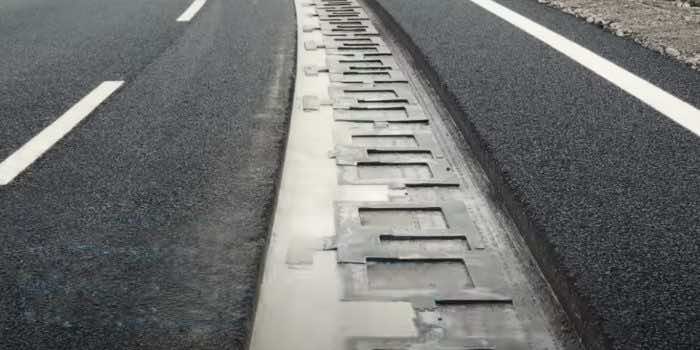The world’s fifth-largest automaker has built and tested a charge-as-you-drive system in Italy with wireless EV charging coils embedded under the surface.
Stellantis, the parent company of Fiat, Chrysler, Dodge, Chrysler, Jeep, Opel, Peugeot, Ram, Maserati, and many others, is a founding member of the Arena Del Futuro project in Chiari, a 1,050-meter (0.65-mile) loop of the road near the Chiari exit of the A35 Motorway, about half an hour outside Milan in northern Italy. This “Arena of the Future” will also include 5G connectivity and IoT ideas, V2X communications, and road surface optimizations.
Its main objective was to test and prove the capabilities of wireless on-road charging systems like Stellantis’s Dynamic Wireless Power Transfer (DWTP) technology. To install the DWTP, some small grooves are cut into the road surface, so that a series of flattish inductive charging coils can be laid down and connected to a power supply. Then, asphalt is poured back over the top.
When active, the coils send power to vehicles passing overhead. At this stage, it appears the energy is sent straight to the car’s electric motor. So rather than charging up the battery, the DWTP system simply takes over supplying energy, so that EVs above can cruise along at highway speeds without burning any battery.
Initial tests are complete, and Stellantis says the power transfer efficiency is “comparable to the typical efficiency of fast-charging stations.” The magnetic fields involved, says the company, have “no impact on the driver and passengers,” and are safe for pedestrians to walk through.

It is, however, a complicated project when thought of it on a commercial scale. \Getting a project like this off the ground at a commercial scale. These things will only make sense if they’re rolled out on very long stretches of high-traffic highways, if drivers can be accurately billed for their use, and if enough people buy compatible cars to make them worthwhile.
Stellantis says the technology “attracts interest for commercial development globally,” since it can also be built into static EV charge stations, parking lots, airports, and the like.


